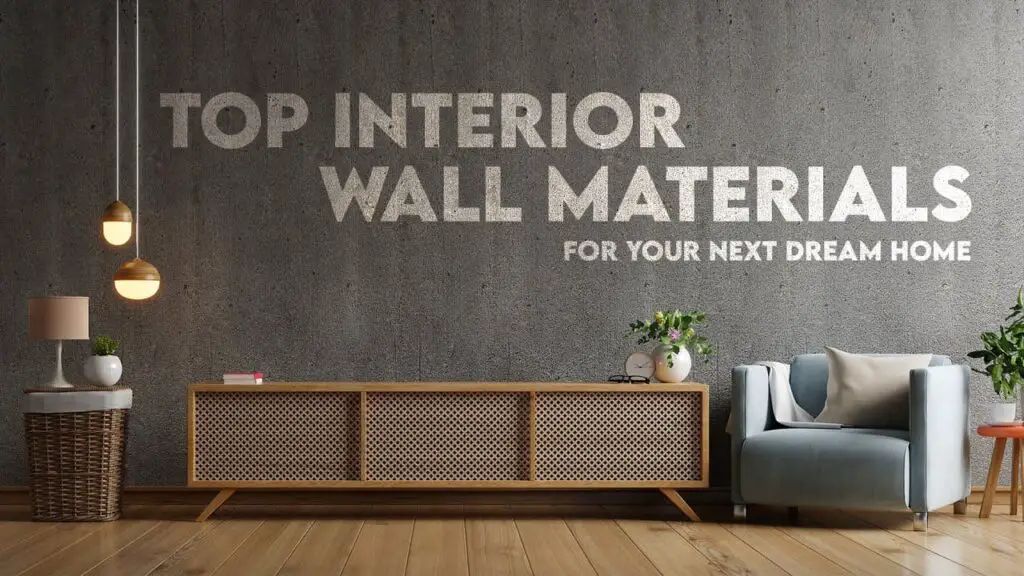When it comes to designing and renovating your home, the choice of interior wall materials can make a significant difference in both aesthetics and functionality. Whether you’re looking to create a cozy atmosphere, make a bold statement, or simply update your space, selecting the right wall materials is key. This guide will explore various options, highlighting the best materials suited for different home styles.
Introduction
Interior walls are more than just structural components; they are an integral part of your home’s decor. The right wall material can enhance the beauty of your space, provide insulation, and even contribute to soundproofing. With so many options available, from traditional plaster to modern panels, it’s important to choose materials that align with your home’s style and your personal preferences. Let’s dive into some popular choices and how they can complement various home styles.
Traditional and Classic Homes
For homes with a traditional or classic design, materials that offer a timeless appeal and sophistication are ideal:
1. Plaster: Plaster walls provide a smooth, durable finish that has been favored for centuries. They are excellent for creating an elegant and classic look, and can be finished with decorative techniques such as Venetian plaster for added flair.
2. Wood Paneling: Wood paneling adds warmth and character to traditional interiors. Options like wainscoting or beadboard are particularly popular in classic homes, offering a refined touch that never goes out of style.
3. Brick: Exposed brick walls can add a touch of rustic charm to traditional homes. They work well in spaces where a bit of texture and historical authenticity is desired, such as in a cozy study or dining room.
Modern and Contemporary Homes
Modern and contemporary homes often feature sleek, minimalist designs. The following materials are well-suited for such styles:
1. Drywall: Drywall is a staple in modern interiors due to its versatility and ease of installation. It provides a clean, smooth surface that can be easily painted or wallpapered, making it perfect for contemporary spaces.
2. Glass Panels: Glass panels are great for modern homes, especially in areas where you want to create a sense of openness while maintaining separation between spaces. They work well in partitions and can add a sophisticated touch to interiors.
3. Concrete: Concrete walls are a popular choice in contemporary designs for their industrial and sleek appearance. They are ideal for creating a minimalist look and can be left raw or treated for a more polish finish.
Rustic and Country Homes
For rustic and country-style homes, materials that bring out natural beauty and warmth are preferred:
1. Reclaimed Wood: Reclaimed wood adds an authentic, weathered charm to rustic interiors. It can be use for accent walls or throughout the space to enhance the country feel and provide a sense of history.
2. Stone: Stone walls are a classic choice for rustic homes, offering durability and a natural, earthy look. They work well in living rooms, fireplaces, and even as exterior features that blend seamlessly with the surrounding landscape.
3. Shiplap: Shiplap boards, with their distinctive horizontal lines, are a hallmark of country-style decor. They are often use in farmhouse designs to create a cozy, inviting atmosphere.
Urban and Industrial Homes
Urban and industrial-style homes embrace raw, edgy aesthetics. These materials can enhance such a design:
1. Exposed Brick: Similar to its use in traditional homes, exposed brick is also a favorite in industrial settings. It contributes to the raw, unrefined look typical of urban lofts and modern industrial spaces.
2. Metal Panels: Metal panels can give your walls an industrial edge, adding both texture and a contemporary feel. They are often used in feature walls or as part of a larger design scheme.
3. Plywood: Plywood is a cost-effective and versatile material that can be use to achieve an industrial look. Its natural texture and simplicity make it a great choice for accent walls and unique design elements.
Conclusion
Choosing the right interior wall material can significantly impact the overall look and feel of your home. By selecting materials that complement your home’s style—whether traditional, modern, rustic, or industrial—you can enhance the beauty and functionality of your space. Consider each material’s characteristics and how they align with your design goals to create a home that is both stylish and functional.
With this guide, you’re equip to make informed decisions and transform your interior walls into a defining feature of your home’s design.


